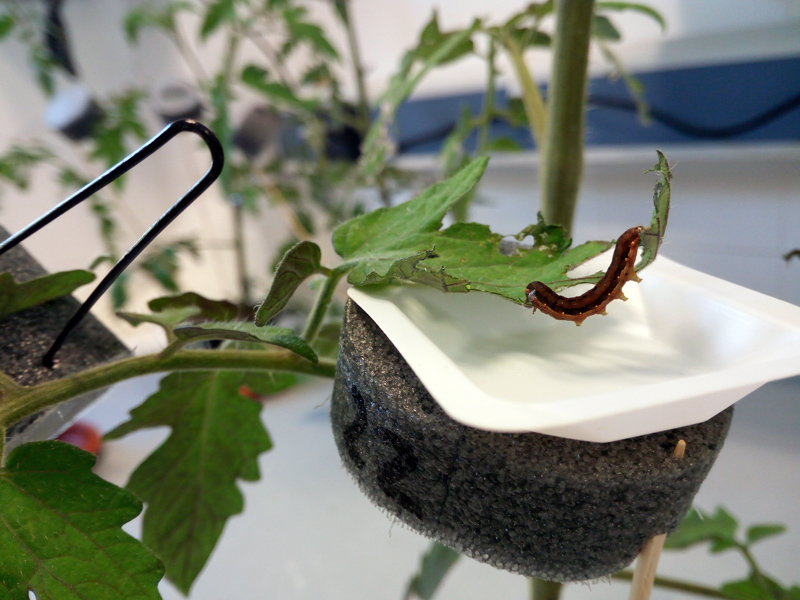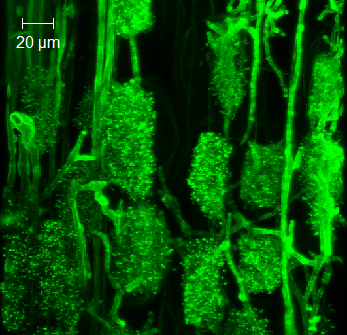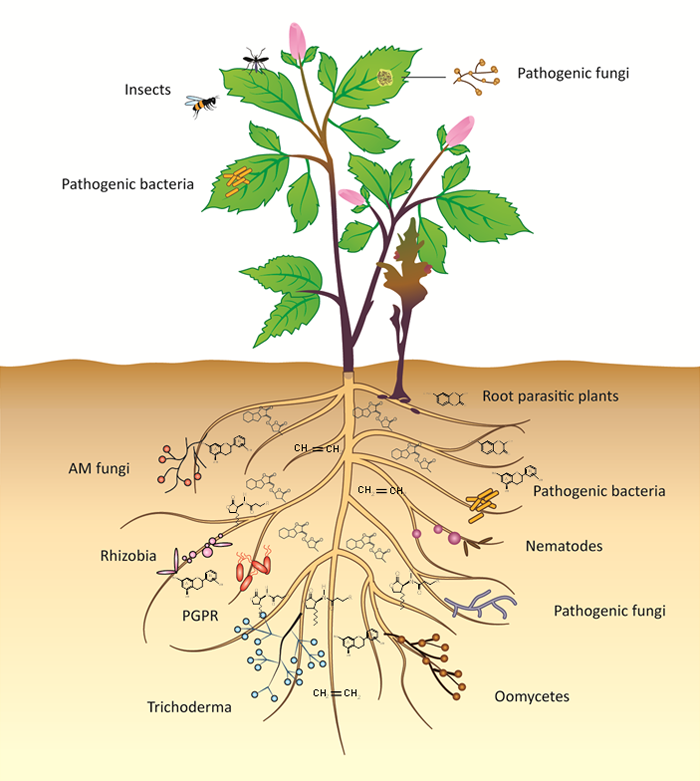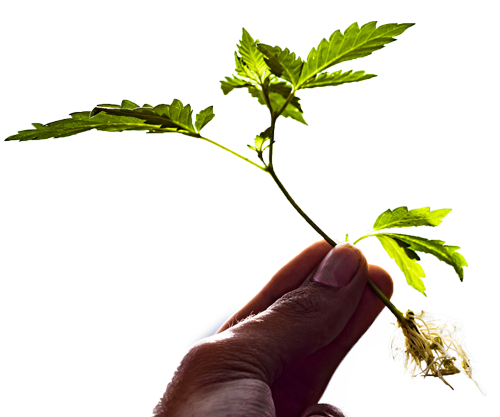Research
Our interest is focused on the mechanisms by which beneficial soil microorganisms, and especially arbuscular mycorrhizal fungi (AM), are able to stimulate the defense responses in plants, making them more resistant / tolerant to diseases and pests.
We are especially interested in the molecular mechanisms and hormonal signaling pathways involved in these defense responses, as well as the signalling and mechanisms that regulate the establishment of the symbiosis.
In addition to basic research, we do scientific dissemination, and knowledge and technology transfer to companies from the agri-food sector.

ARBUSCULAR
MYCORRHIZAS
Arbuscular mycorrhizas (AM) are mutualistic associations established among some soil fungi (phylum Glomeromycota) and most land plants, including agricultural crops. The symbiosis helps the plant to cope with unfavourable conditions.
Through the symbiosis, both ‘partners’ (plant and fungus) obtain important benefits. The plant provides the fungus with carbohydrates and lipids for its development. At the same time, the fungus improves plant nutrition and health through the absortion of water and nutrients such as phosphorus and nitrogen, and making them more tolerant to different environmental stresses (biotic and abiotic).

The group of MICORRIZAS at the Departament of Soil Microbiology and Symbiotic Systems at the Estación Experimental del Zaidín (EEZ) from CSIC is studying different aspects of this beneficial symbiosis for more than 25 years.
Establishment of the
SYMBIOSIS
The correct establishment and functioning of the AM symbiosis depends on a specific communication/signalling between the two partners, which is finely regulated.
In this communication, certain plant secondary metabolites, strigolactones and flavonoids, play a key role. These compounds are released into the rhizosophere by the plant acting as signalling molecules. In this communication, signalling compounds produced by the AM fungus (Myc factors) are also important. One of our aims is to deepen in the knowledge of these signalling molecules, how they are produced and the mechanisms behing their regulation. This knowledge will allow to develop future strategies to optimize plant-AM fungus interaction, thus improving the benefits of the symbiosis.

Lopez-Raez et al 2017. Trends in Plant Science 22(6): 527-537.
MYcorrHizaL
Induced resistance (MIR)

In addition to improve plant nutrition, AM symbiosis increases plant tolerance and/or resistance to different biotic and abiotic stresses. A number of studies have shown that mycorrhizas affect plant interactions with pathogens, insects, nematodes and parasitic plants.
We have shown that mycorrhizal induced resistance (MIR) is the result of the combination of both local and systemic effects, and that it takes place by the priming of plant defense responses. We have also shown that MIR is associated to transcriptional and hormonal changes within the host plant.
Our research is based on deepening in the mechanisms of MIR by using genomic and metabolic approaches. We also aim to characterize the signalling pathways and the regulators involved in such process.